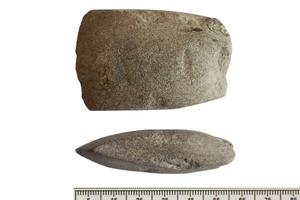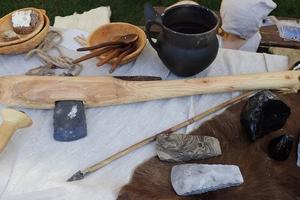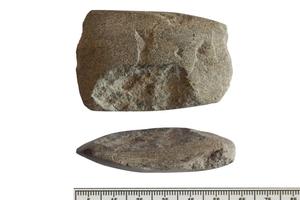An eight-year-old schoolgirl has made a remarkable discovery, all thanks to her keen eye.
While walking her dog in a ploughed field near the village of Košolná in the Trnava district, western Slovakia, Rebeka noticed a smooth, regular-shaped stone. It reminded her of archaeological objects she had seen in a museum and a book about archaeology, reports My Trnava.
"She called her father, who, as an archaeology enthusiast, immediately recognised the object as a prehistoric axe," explained archaeologist Matúš Sládok.
They photographed the find on site, recorded its coordinates, and informed the Trnava Regional Monuments Office.
Prehistoric axe
According to the expert's description, the axe has a rounded trapezoidal shape, measuring 6.1 centimetres in length, 3.9 centimetres in width, and 1.6 centimetres in height, with a weight of 65 grams. It was crafted from green slate.
"Such smooth axes were made by splitting a stone of a suitable shape using another stone, and then grinding it on stone pads until the desired form was achieved," explained Sládok.
The tools used in the process had to be at least as hard as the stone from which the axe was made.
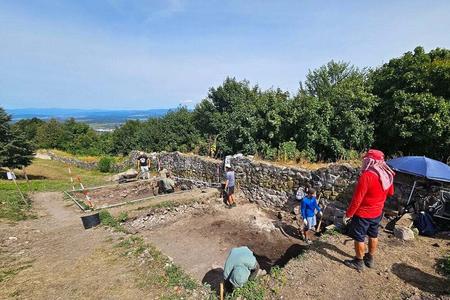
The axe was typically mounted onto a wooden or antler handle and secured with a cord made from plant fibres or animal tendons. It was primarily used for felling and processing wood.
Such objects are characteristic of the younger Stone Age (Neolithic, approximately 5,000–4,400 BC) and the late Stone Age (Eneolithic, 4,400–2,200 BC). According to Sládok, the shape of the axe found in Košolná suggests it dates back to the Neolithic period.
Little explorers
Rebeka's parents applied for a finder's fee on her behalf, and in cooperation with the Trnava Regional Monuments Office, she also received free entry to the West Slovak Museum in Trnava. There, an archaeologist will guide her through the archaeological exhibition. Rebeka's prehistoric axe will also be transferred to this museum.
It is not uncommon for minors to discover unique archaeological finds or even entire sites. For instance, in 2016, fifth-graders Juraj and René from eastern Slovakia unearthed parts of a ceramic vessel while digging a hole for a bunker.
In 2020, seven-year-old Damián discovered a spearhead, likely dating back to the Middle Ages, during a hike with his parents near Ružomberok, northern Slovakia.
In 2017, high school graduate Dávid spotted an unusual metal object sticking out of the gravel during a barbecue by the Váh River. He took it home and showed it to his mother, who discovered online that it might be an archaeological artefact. It turned out to be a Stabdolch dagger from the early Bronze Age, nearly 4,000 years old. Until then, only four such daggers had been found in Slovakia.
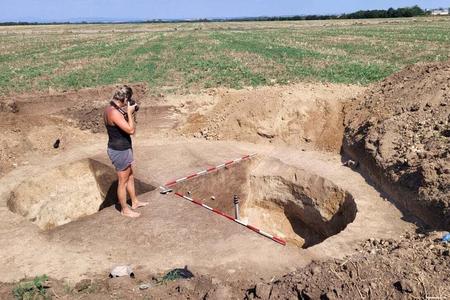



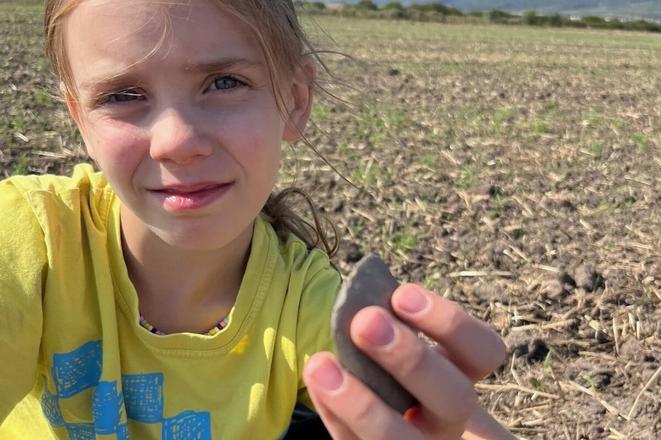 An eight-year-old schoolgirl has made a remarkable discovery, all thanks to her keen eye. (source: KPÚ Trnava)
An eight-year-old schoolgirl has made a remarkable discovery, all thanks to her keen eye. (source: KPÚ Trnava)
